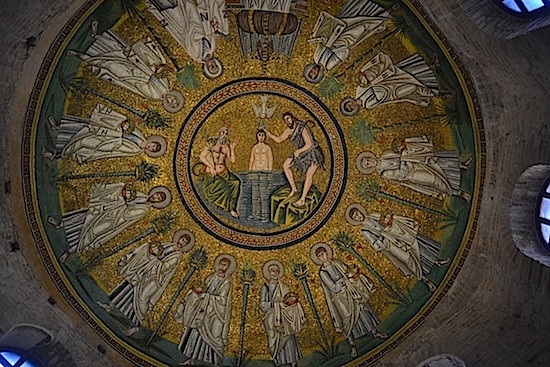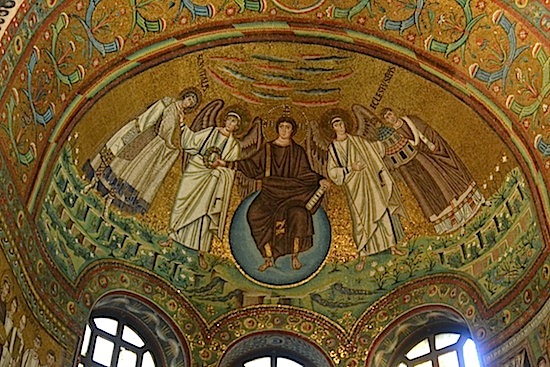The Arian Baptistry in Ravenna, Italy

Ceiling of the Arian Baptistry
Last week I blogged about the fantastic Basilica of San Vitale, in Ravenna, Italy. That’s only one of several fine examples of Late Antique art in the city and only one of eight UNESCO World Heritage Sites there.
Another is the Arian Baptistry, built by the Ostrogothic king Theodoric the Great at the end of the 5th century. Theodoric was an Arian Christian, following a creed that believed that Christ was distinct from, and subordinate to, God the Father. This is because Christ did not always exist but was created by God the Father. More orthodox Christians at the time believed that Christ was both human and divine but was one and equal to God the Father. Theodoric had both types of Christians in his kingdom and to avoid trouble, kept them in separate neighborhoods with separate houses of worship
